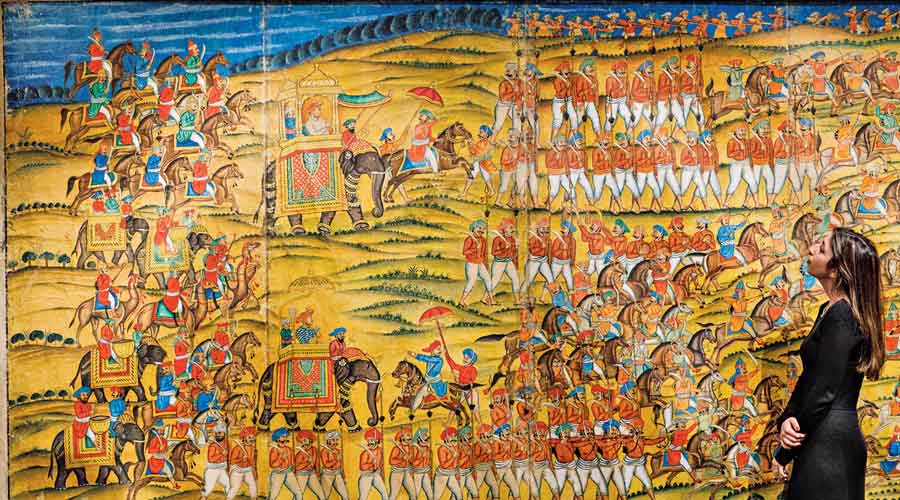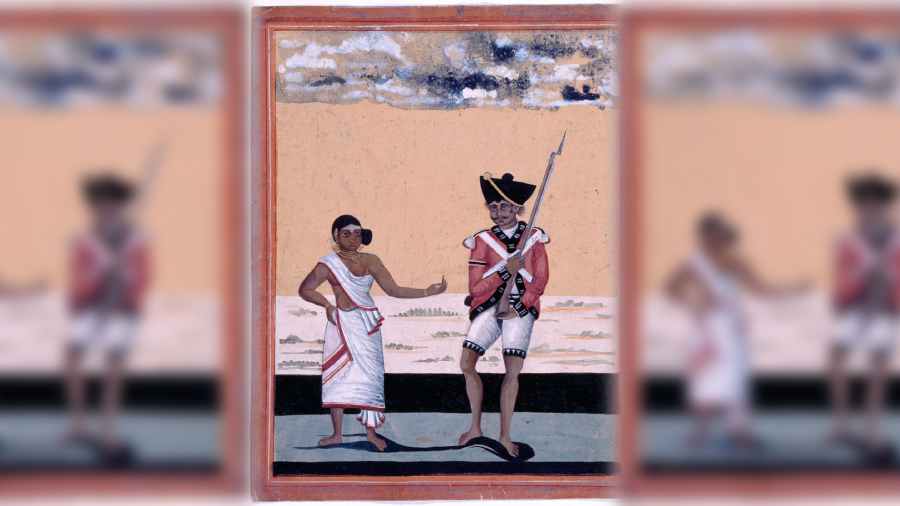The mural shows Indian cavalry troops advancing from both sides on a cornered British army, guns blazing. In one part of the 18th-century battlefield, the victorious commander sits on an elephant holding a red rose.
To William Dalrymple, a leading British historian of India, the roughly 32-foot-long masterpiece, which was sold at an auction in London on Wednesday, is an artistic triumph and a potent symbol of Indian resistance to British imperialism.
“It’s arguably the greatest Indian picture of the defeat of colonialism that survives,” Dalrymple told Sotheby’s, the auction house overseeing the sale. “It’s a unique and fantastic artwork.”
But in modern India, the commander’s legacy is complicated. Politicians from India’s governing political party, which has increasingly embraced Hindu nationalist rhetoric under Prime Minister Narendra Modi, have spent years downplaying his achievements.
The commander, Tipu Sultan, was a Muslim; they say he is responsible for the deaths of Hindus.
The mural was sold on Wednesday afternoon in London for £500,000, or about $655,000. It was unclear who provided the winning bid. Sotheby’s said before the bidding started that the mural was most likely worth between £500,000 and £800,000. News of the auction was reported earlier by the BBC.
The mural consists of 10 large sheets mounted on canvas and is thought to have been made in the early 19th century. It depicts the Battle of Pollilur in 1780, part of the Anglo-Mysore Wars that took place in southern India around then. It celebrates not only Tipu Sultan, who was about 30 at the time, but also his father, Haidar Ali, then the ruler of Mysore State.
Mysore was among the strongest states to emerge when the Mughal Empire collapsed in the 18th century after dominating the Indian subcontinent for about 200 years.
During the decades that Haidar Ali and later Tipu Sultan ruled Mysore state, reports of their attacks on British trading settlements were carried in British newspapers, “embellished by distance as they were carried home by sea”, according to a 2016 biography of Tipu Sultan by the historian Kate Brittlebank.
By the time he died at the hands of British troops in 1799, Tipu Sultan was “possibly the most famous Indian, if not villain, in the United Kingdom”, Brittlebank wrote in her book. His nickname was the “Tiger of Mysore”.
Dalrymple said the Battle of Pollilur was the first defeat of a European army in India and “nearly ended” British colonial rule there.
“Tipu Sultan was probably the most effective opponent that the East India Company ever faced,” said Dalrymple, author of a 2019 book on the company, which was founded in 1599 to run British trade in Asia and eventually developed into a large army with a trading division.
“Tipu showed that the Indians could fight back,” he added. “That they could win. That they could use European tactics against the Europeans and defeat them.”
Today, grand buildings associated with Tipu Sultan, including a mosque, dot the landscape in and around Mysore. The Karnataka government promotes the buildings as tourist attractions.
At the same time, officials from the ruling BJP are trying to downplay Tipu Sultan’s legacy across India. The BJP-led state government in Karnataka has convened a special committee to review whether other Muslim leaders have been “glorified” in local school textbooks.
Modi’s nationalist message has often pitted Hindus against Muslims. In recent months, calls for anti-Muslim violence in India have increasingly moved from the fringes to the mainstream, even as Modi and top BJP leaders have remained silent.
British colonial propaganda portrayed Tipu Sultan as a “one-dimensional fanatic”, but work by modern scholars has reconstructed a “very different Tipu”, Dalrymple wrote in an essay for Sotheby’s ahead of the auction.
“What really worried the British was less that Tipu was a Muslim fanatic, something strange and alien, but that he was in fact frighteningly familiar: a modernising technocrat who used the weapons of the West against their own inventors.”
New York Times News Service











